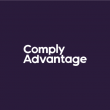Is regtech living up to expectations? (And if not, why not?)
The regulatory environments in which wealth management firms operate are exacting at the best of times. Where they apply cross-border, these environments become even more complex as extra regulations, set by multiple jurisdictions, become involved.

With greater uptake – and given full integration into critical flows using a digital warehouse – regtech could become transformational
For wealth managers navigating this rules-and-regulations labyrinth, infringement risk and administrative burden can lead to significant frictions and sometimes fraught client relationships. Regtech is becoming an essential business tool to help avoid these negative outcomes.
Powered by artificial intelligence (AI) and machine learning (ML), and configured to meet the compliance rules involved, the technology enhances transparency and consistency, and standardises regulatory processes.
But is regtech living up to expectations?
According to the Thomson Reuters’ Fintech, RegTech and the Role of Compliance Report 2021, “16% of wealth management firms have now implemented regtech solutions and a further 34% report that regtech solutions are affecting compliance management”. However, innovative and effective as these applications are, they mostly remain on the outside of core wealth management processes.
For wealth managers, this means there is still a lot of stitching together to be done by hand. Yes, they can input queries easily enough. But the answers provided are not seamlessly embedded within end-to end processes. This often leads to duplication of efforts and a need to replicate input data.
In short, unless and until it’s embedded into the core processes of wealth management advice and client service, the potential of regtech remains constrained.
The answer lies in deeper integration
For regtech applications to be truly empowering, they should enable wealth managers to approach clients confidently and quickly provide them with insightful and personalised advice.
Wealth managers should have the confidence to recommend products and services to clients, safe in the knowledge that the risk of infringing compliance rules and of mis-selling is removed before dialogue even begins.
Regtech can achieve this. But it can only work to full capacity when it’s introduced into core processes that wealth managers and compliance teams can access effortlessly and simultaneously. By applying unified know your customer (KYC) and suitability rules to clients through over-arching regtech technology, wealth management firms can act with greater speed, while achieving increased productivity and compliance.
The way to enable regtech to achieve this starts with a single version of the integrated truth. Firms should adopt a data-centric architecture, but equally seek a digital warehouse as the foundation so that they can trust all the data. All the best analytics in the world mean nothing without a sound foundation. As they say, rubbish in, rubbish out.
Unleashing the potential of automated KYC
In addition to a digital warehouse, a KYC-embedded infrastructure that wealth managers and compliance teams can jointly access will deliver optimal functionality. All key actors can work together to protect their wealth management firm from clients who might present compliance-related reputational risk.
By applying controls and capabilities to adjust rules, compliance teams should be able to easily outline mandatory behaviours for wealth managers to comply with, ahead of onboarding clients. For example, if the system detected that a prospect operates in an industry the wealth management firm wishes to distance itself from, it would trigger an alert and a review process before any meaningful sales discussions began.
The same applies for investigating sources of wealth. Using a powerful combination of AI and natural language processing (NLP), company records, press coverage and social media can be scrutinised across multiple languages, to ascertain wealth source legitimacy.
Knowing a prospect is unproblematic ahead of face-to-face conversations removes the need to ask awkward questions and allows wealth managers to sell with renewed confidence. It also stops them having to refer multiple cases to compliance teams, a situation which can lead to delays and frictions between the two departments.
Embedding suitability to increase productivity
It is crucial for clients to know exactly what their risk appetite is and for it to be understood by the wealth managers who deal with them. Sufficient controls must be in place to ensure that only products aligned with a client’s risk appetite are offered.
By bringing regtech applications into critical flows, wealth managers can automatically determine the suitability of each product for a given client (based on their profile, circumstances, knowledge, experience and risk appetite). Safe environments can be created, where advisors and their clients can explore opportunities without risk (of non-compliance).
With unsuitable products and services excluded from discussions, the wealth manager can enter into transparent and creative dialogue with their client, helping them pick products based on personal preference or by using automated preferential scoring. Whichever method is chosen, wealth managers are freed to be unconditionally client focused, secure in the knowledge that every product and service they sell sits inside regulatory boundaries.
Once fully embedded, suitability engines can be adapted for different jurisdictions and their associated rules, to add another layer of safety and versatility. For example, MiFID generally imposes bigger burdens than other consumer protection regulations. So, where required or desirable, rules should be easy to adjust to comply with local policies.
Regtech integration could transform the wealth management industry
Broadened regtech integration, as described here, is not a hopeful future vision. It can be leveraged right now. Yet what we know about how wealth management firms often deploy their regtech applications – in isolation from their core processes – suggests the full potential of the technology is not being properly realised.
As long as this remains the case, many wealth management firms will likely continue to believe that regtech is not living up to expectations. The challenge therefore is to educate the industry about the critical need to embed the technology within core processes, and about the very significant benefits doing this will bring.
Even as standalone applications, we can see that regtech is enhancing the practice of wealth management industry users. With greater uptake – and given full integration into critical flows using a digital warehouse – it could become transformational.











































